Aquidauana
The combined Aquidauana and Anastácio municipalities cover almost 20,000km2, bordering other nearby municipalities of Corumbá and Rio Verde. The region can be split into two geographic areas - a lowland occupying about two-thirds of the region, with the remaining one-third being occupied by the hills of the the Serra da Maracaju and Serra da Piraputanga. These hill ranges are a popular retreat with the extra altitude helping bring relief from the heat and humidity during summer. There are also several fast flowing rivers which are sought after by locals for canoeing and rafting, and which are said to have some of the best fishing in the Pantanal.
The Aquidauana township is actually two towns: Aquidauana (on the north side of the river), and Anastácio (on the South side). Both towns grew independently and were first linked in 1926 with the construction of a small single-lane bridge. This bridge (known as the Friendship Bridge) still exists but is now supplemented by two other large multi-lane bridges - allowing the twin towns to function effectively as a single entity. The towns are located 140km from the state capital, Campo Grande, and have a combined population of around 70,000 people,
Aquidauana is known as Cidade Natureza (City of Nature), and it's proximity to the Pantanal means that wildlife can be seen even in its parks - including macaws, herons, and tuiuiú which sometimes nest in the Praça da Matriz near the cathedral.
Things to See and Do
Cathedral - Igreja Matriz
Praça Nossa Senhora da Imaculada Conceição. 7am-5pm
The cathedral is located in a plaza (Praça da Matriz) close to the river. With its high spires, it is the most dominant building in the town. The church was built in 1930 in the neo-gothic style, with a layout inspired by the famous Cathedral of Notre-Dame. A notable feature is the stained glass window made using the old-fashioned method of pouring molten lead to interconnect coloured glass.
Above: The picturesque Igreja Matriz de Aquidauana overlooks the town's plaza.
Below: Friendship Bridge (Ponte de Amizade) is a single lane bridge. It was adapted from a railway design, and constructed in 1926 to link the twin towns of Aquidauana and Anastácio.
Parque Ecológico da Lagoa Comprida
Lake Comprida Ecological Park.
Rua Moisés, Albuquerque. 6am-6pm
This is an area of forest surrounding a small lake, near the centre of town. It remains largely undeveloped and is a popular spot for walks, jogging and picnics. It's protected as an important conservation area in the heart of the city where you can see nesting herons and macaws.
Friendship Bridge
Near Praça da Matriz
Also known as the Old Bridge, this was inaugurated in 1926, and was the first bridge crossing the Aquidauana river to link the neighbouring Aquidauana and Anastácio townships. Constructed in iron and wood, and using a design adapted from a railway bridge, it is still used today despite it being a single lane only.
Mercado Municipal
Rua 7 de Septembro, 937
Mon-Sat: 6am-5pm; Sun 6-11am
This was inaugurated in 1962 as a simple open air market, and has evolved to the town's major food market selling fruits, vegetables, grains, meat, regional products and other non-food services such as hairdressers, dressmakers and personal loans.
Casa do Artesão
Praça dos Estudantes.
Mon-Fri: 7am-4pm
Located in a small plaza containing the town's Public Library and a sound shell, the Casa do Artesão exhibits and sells artworks from around 300 local artists and craftspeople. In addition to art and traditional leatherwork, there are sweets made using local fruits.
Clube do Laço Pantaneiro
Rodovia Aquidauana, Cera, km 7.
Created in 1983 by a group of cattle ranchers, Aquidauana's Clube do Laço Pantaneiro inspired the formation of several other similar clubs in the region. In addition to running competitions it's also an important social club for the town.The club complex consists of a rodeio area, sports fields, woodlands, and a social area. Major rodeio events are typically held in June and September.
Clube da Canoagem de Aquidauana
Rua Pandiá Calógeras, 921
This is a club operated by local canoeist and whitewater rafters who often run weekend expeditions on the region's rivers. This isn't a tour agency, and there's no guarantee that they'll have places or equipment available - but the club has been active and keen to encourage the development of the sport locally, and may be in a position to assist like-minded adventurers.
Museu de Artes Pantaneiras
Rua Cândido Mariano, 462.
Closed for refurbishment.
Located in a historic building constructed in 1918, the museum exhibits regional artworks, and maintains collections of artefacts from the Paraguayan War and early telecommunications equipment used in the late 19th and early 20th centuries to link the remote town to the outside world. Unfortunately, as of March 2017, this was closed pending restoration of the building. No re-opening date is yet set.
Museu Marechal José Machado Lopes
Rua Duque de Caxias, s / n - Bairro Alto
Located near the headquarters of the 9th Combat Engineering Battalion, the museum celebrates the achievements of the Brazilan Expeditionary Force in World War II. Brazil was the only independent South American country which contributed combat forces. The Brazilians fought with distinction in a difficult campaign against German forces in Italy alongside the Americans, British, Canadians, Australians, and New Zealanders. The 9th Combat Engineers were the first of the Brazilians to enter combat in Italy and one of the trophies on display is large German flag captured during operations in Scodogna. The Brazilian forces were notable for operating integrated fighting units, unlike the United States which still segregated its units by race. In addition to infantry, Brazil contributed an air force fighter group and its navy played a significant role fighting U-boats in the Atlantic.
Local Events
January 20 - Festival of St Sebastian
February - Carnaval
April 9 - Procession of Fire
April 19 - Indian Fair
June 10 - Procession of Corpus Christi
June - Juninas Festival celebrations
August - Agricultural Show & Rodeio
September - Fishing Festival
October - Festival Clube do Laço Pantaneiro
History
Early Spanish Settlement
The Aquidauana region was the first within the Pantanal to be settled by Europeans with the creation of the village of Santiago de Xerés. This was originally founded in the 1579 by the Spanish Explorer, Ruy Diaz de Malgarejo near Miranda, then relocated in 1593 and 1596 by Ruy Dias de Guzman who moved it closer to the location of the current Aquidauana township. This was the most remote in a series of settlements created by Spanish colonists from Asuncion, and from Jesuit missions in other districts to the south and west of the Pantanal. The original objective of the settlement was to help protect land routes from the Paraguay to the Atlantic. The settlers also had hopes of finding gold, silver and other mineral wealth, but the location never yielded any significant returns - with one Jesuit historian describing that "the inhabitants of Xerés were always wretchedly poor". The tiny number of colonists was vastly outnumbered by local indians (from various tribes, and speaking different languages) who were keen to protect their fertile lands from encroaching Europeans. This resulted in several occasions when rescue parties needed to be sent out from Asunción with arms, food and soldiers. Eventually, as the Portuguese settlers and bandeirantes pushed further westward, the colonists of Xerés found themselves under more frequent attack, and further maintenance of the settlement became untenable. Santiago de Xerés was abandoned in 1632. The ruins were rediscovered and briefly re-used as a base in 1776 by the Portuguese explorer João Leme do Prado. These are located 12km away from the Aquidauana town centre.
The Retreat from Laguna
Aquidauana was the scene for a major episode of the Paraguayan War known as the Retirada da Laguna (Retreat from Laguna). This was a military disaster for Brazilians, and was a clear sign that taking the war back into Paraguayan territory would be no easy feat. It occurred as Brazilian reinforcements finally arrived into the Mato Grosso territory following the invasion by Paraguay in 1864-5. A Brazilian force of 2,780 volunteers and conscripts had left Uberaba in Minas Gerais in April 1865, facing a trek of over 2,000km through difficult territory - arriving into the town of Coxim eight months later. Throughout 1866, the column traversed the Pantanal and other nearby regions - seeking to engage the Paraguayans but finding that they'd already abandoned most of the captured towns. Although there were some deaths through skirmishes, most of the 1,100 deaths within the Brazilian column up until that time resulted of diseases such as Cholera, Typhus and Beriberi. In January 1867, command of the column was assumed by Colonel Carlos de Morais Camisão, who led the remaining force on a planned invasion into Paraguay. By April they'd reached the Laguna Fazenda (a location near Brazilian town of Bela Vista, but then still part of Paraguay). Unfortunately for the Brazilians, the continued sickness and strong opposition by Paraguayan Cavalry forces combined to effectively destroy the column. Facing constant harassment by enemy cavalry, the Brazilians retreated their way back across the wild territory - crossing rivers and swamps, with their numbers continuing to diminish. The retreat finally ended in June 1867 at Porto Canuto (in Anastácio) with only 700 soldiers remaining. In addition to the soldiers, the sickness had wiped out hundreds of merchants and civilians (including women and children) who'd attached themselves to the column as it progressed through the territory. The story of the retreat was documented by one of its participants, Alfredo d’Escragnolle Taunay (later Viscount of Taunay) - and has assumed a significant place in the Brazilian national identity (akin to the French retreat from Moscow), serving as rallying call for successive presidents, and inspiring many books, films and tele-novelas. There is also a large monument to the retreat in Rio de Janeiro.
Founding of Aquidauana
The modern town of Aquidauana was founded in 1892 when farmers from the nearby regions agreed that a town was as a river port for the shipment of their cattle, and to help foster further development. A meeting was held, a site chosen and named, and the first officials elected. Many early residents were former soldiers who'd stayed in the region after the Paraguayan War, and subsequently helped build the town. With the arrival of the railroad, the fledgling town soon grew into the major regional centre. Even though the railroad workshops and offices were moved to the town of Três Lagoas in 1917, the railroad and resulting traffic continued as a major contributor to the local economy. The town is proud of its progress and many firsts in the region including being the first municipality in the State to have electricity (April 1928), and the first widescreen cinema.
Although still very pretty on the outside, the Museu de Artes Pantaneiras on Rua Cândido Mariano, is currently closed for restoration. No re-opening date is yet set.
Surrounding Area
Estrada Parque de Piraputanga
Also known as the Estrada Ecológica, and having the official designation MS-450, this is a 42km stretch of unpaved road running parallel with the Aquidauana river (and ) towards Distrito Camisão and the Serra de Piraputanga. It was named as a conservation area in 2000. Along these roads you'll see dramatic granite escarpments, forest, and rivers with some great fishing spots. There are also a few caves, and pre-Colombian rock paintings.
Distrito Camisão
The Camisão District is named after Colonel Carlos de Morais Camisão, a hero of the Paraguayan War. This is located in the Serra de Maracajú,18km from Aquidauana on the Estrada Parque road, and was originally a fishing and mining village. A side road takes you to the top of Morro do Paxixi, the highest point in the Serra da Maracajú. This hill is popular for adventure sports such as hang gliding and paragliding. The Camisão district also contains several scenic waterfalls which are popular spots for swimming and picnics. These include:
- Cachoeira do Morcego (35m),
- Cachoeira do Chuveiro (20m); and
- Cachoeira do Segredo (18m).
Distrito Piraputanga
The Piraputanga District is the second set of hills along the Estrada Parque road. The village was founded by diamond prospectors, and sits in one of the most beautiful landscapes within a region, surrounded by dramatic sandstone canyons. It contains several fast-flowing rivers which are a favourite for fishermen, plus several popular walking trails. Piraputanga is also a popular location for kayakers and whitewater rafters. Kayakers pass through a series of rapids until reaching Camisão (about 2 hours). The next 20km includes several more rapids before finishing on the beach in Anastácio. Kayaking and rafting trips are commonly organised by the Clube da Canoagem in Aquidauana.
Distrito Taunay
Located midway between Aquidauana and Miranda, Distrito Taunay originated as a railroad stop for receiving goods and shipping cattle. There are also several Terena indian villages nearby: Bantanal, Ipegue, Lagoinha, Água Branca, Embiruçu and Morrinhos. The most accessible is the village of Limão Verde, 24km from Aquidauana, where you'll find a waterfall, caves and inscriptions, and an old stone church. Visits can only be made with permission from Funai (There's a Funai post in Limão Verde, but permission for large groups needs to requested in Campo Grande).
Tour Options
Most hotels and pousadas in Aquidauana should be able to arrange tours of the region, with guides and other contacts for fishing, boating trekking and horse riding. For adventure sports such as canyoning and rappelling down the waterfalls (Cachoeira do Chuveiro and Cachoeira do Segredo) or in the Serra de Maracajú, contact the Pousada Sol Amarelo in Piraputanga.
Enjoy traditional pantaneiro cuisine in Restaurante O Casarão on Rua Manoel Antonio de Barros.
Places to Eat
Some of the places to eat within Aquidauana and Anastácio are listed below. Note that lunches are often of the self-service pay-per-kilo variety.
Name
Description
Restaurante O Casarão
Rua Manoel Antonio de Barros, 533, Aquidauana
Popular option with locals and tourists alike. Open for lunch and dinner. Friendly, and a great place to experience with local dishes.
Churrascaria Princesa do Sul
Rua Manoel Antonio Paes de Barros, 943, Aquidauana
Aquidauana is prime cattle ranching territory, so the barbecues have to be good. Rodizio and self-service buffet. 12 kinds of meat.
Restaurante e Choperia Moderna
Rua Augusto Mascarenhas, 573
Aquidauana
Fairly simple bar and restaurant. Open for lunch, and again for dinner till late.
Restaurante Estação Pantaneira
Rua Bichara Salemene, Estação Ferroviária, Aquidauana
Based in the Aquidauana railway station. Lunches only. Nothing fancy but good.
Restaurante Viana
Rua Marechal Mallet, 773
Aquidauana
This is a bakery doubling as a pizzeria. Open early till late. Offers several gourmet versions Brazil's of the ubiquitous x-salada (pronounced "sheese-salada" ... essentially a hamburger). The x-picanha is highly recommended.
Restaurante Amarelinho
Praça das Nações, 138
Anastácio
Open for lunch and dinner. Regional fish dishes.
Churrascaria O Laçado
Two locations:
Avenida da Integração, 601+
Rua Pedroso Alagues
Anastácio
Rodizio and Self-Serve
First location lunch only. Second location open all day till late.
Places to Stay - Aquidauana / Anastácio
Most hotels within the town are geared towards locals, and are fairly basic. However, the list below may be useful in the event you need to spend a night in town - plus they might also be a useful source of information about tours.
Name
Description
Hotel Beira Rio
Rua Joao De Almeida Castro, 198, Aquidauana
beirariopantanal.com.br
Located near the entrance to Aquidauana, and about 1km from the town centre. Not fancy - but well-run and very helpful staff.
Portal Pantaneiro Hotel
Rua Pandia Calogeras, 1067, Aquidauana
www.portalpantaneiro.com.br
Basic, but conveniently located near the town centre.
Fênix Plaza Hotel
Av. Juscelino Kubitscheck, Anastácio
www.fenixplaza.com.br
A good option for travellers passing through. Located just off the main highway (BR-262) at the entrance to Anastácio.
Rancho do Pescador
Rodovia BR 262 - km 487, Trevo de Aquidauana
www.ranchodopescadorms.com
Located 5km outside of Aquidauana, along BR-262. Aimed at Brazilian tourists who visit the town for fishing. Includes a good restaurant.
Places to Stay - Pantanal Lodges
The following is a list of Pantanal lodges, fazendas and pousadas in the Aquidauana region. These give visitors an opportunity to experience the Pantaneiro lifestyle on a working cattle ranch, in addition to viewing Pantanal wildlife. Included activities generally include horse riding, fishing for piranha, wildlife treks and jeep safaris - however its recommended that you verify availability of these before booking (also advising any special needs). Most tourist fazendas now have Internet and wif-fi but don't expect it to be fast. Road access may only be possible in the dry season, with an air taxi being needed to reach some locations at other times.
Several further nearby lodges are listed in the guide for Miranda (which is only a short distance from Aquidauana). You can also use the interactive zoomable map on our Pantanal Maps page to see approximate locations.
Name
Description
Barra Mansa
MS-170, near Rio Negro river
www.hotelbarramansa.com.br
One of the most reputed Fazendas in the region, located on the Rio Negro between two patches of wetland - and a good spot for jaguars. About 120km from Aquidauana and only accessible by road in the dry season. Otherwise, best accessed by plane.
See Trip Advisor reviews.
Embiara Lodge
MS-170, near Rio Negro river
www.embiara.com
Has stopped operating as a Lodge, but check their website (and great blog) for updates
Also located on the Rio Negro close to Barra Mansa and Fazenda Barranco Alto.
See Trip Advisor reviews.
Fazenda Baía das Pedras
Rio Negro river
www.baiadaspedras.com.br
Located along the Rio Negro, without (easy) road access . The lodge can help arrange pilots and 4x4 access. Highly rated, and remoteness helps ensure great wildlife viewing opportunities. This fazenda also plays host to the Giant Armadillos conservation project. Check availability of English-speaking guides when booking.
See Trip Advisor reviews.
Fazenda Barranco Alto
MS-170, near Rio Negro river
www.fazendabarrancoalto.com.br
Highly rated with a strong focus on conservation and research - although it remains a working cattle ranch. Has an observation tower and hides for spotting a good selection of wildlife. Over 400 bird spacies have been recorded.
See Trip Advisor reviews.
Fazenda Rio Negro
Rio Negro river
No longer operates as a Lodge
Still listed in some guidebooks. This is one of the most famous (and oldest) ranches in the Pantanal, and a key location for a famous Brazilian soap opera in the 1980s which helped make the Pantanal a tourist destination. Was formerly being run as a lodge by Conservation International but recently sold.
Pousada Aguapé
BR-262 Km 57 - Fazenda São José
www.aguape.com.br
Includes a diverse landscape of cerrado, wetlands, lakes and forest. A wide range of wildlife has been reported.
See Trip Advisor reviews.
Pousada Caburé
Rio Negro river
www.pousadacabure.com.br
Located deep in the Pantanal, above the Rio Negro without (easy) road access. Best option is to fly in. Not reviewed as yet.
See Trip Advisor reviews.
Pousada Campo Lourdes
Rio Negro river
www.campolourdes.com.br
Good location near a protected area along the Rio Negro. However, few reviews and website not working. Can contact via email: falecom@campolourdes.com.br
See Trip Advisor reviews.
Pousada dos Monteiros
MS-419, near Rio Negro river
www.pousadadosmonteiros.com.br
Fairly easy access on MS-419, or a short plane ride from Campo Grande. Good wildlife viewing opportunities, and activities such as kayaking.
See Trip Advisor reviews.
Pousada Mangabal
Above Rio Negro river
www.techimage.com.br/pantanal
Remote location deep in the Pantanal requiring experienced 4x4 or air access.
No reviews available
Pousada Pequi
BR-262 Km 48, near Aquidauana
www.pousadapequi.com.br
Positively reviewed, and relatively easy to access near Aquidauana. Website no longer active. Email: pousadapequi@yahoo.com.br or via Facebook page
See Trip Advisor reviews.
Pousada Sol Amarelo
Piraputanga
www.solamarelo.com.br
Not a Pantanal lodge, as its located in the Piraputanga hills near Aquidauana - but worth look if you want to try local adventure sports or a spot to unwind.
See Trip Advisor reviews.
Getting there
Air: There aren't many options with scheduled air services into Aquidauana. Air taxis may be required to access some remote fazendas, with one-way prices ranging USD 500-1500 depending on the location and size of aircraft. This price can be split among multiple passengers if travelling in groups although there may be luggage restrictions depending on number of passengers and capacity of the plane. Air taxis can be booked from Campo Grande airport or via the links below:
Amapil Táxi Aéreo
Mato Grosso do Sul Táxi Aéreo
Pan Air Táxi
Bus: There are several regular bus services run by Andorinha and other local companies between Campo Grande, Aquidauana, Miranda, and Corumbá every few hours. See the link below for times and bookings:
Bus transport and vans can also be arranged to Bonito (although you may need to check details with your hotel or at the bus station). Formoso Transportes (Ph 067 3255-1298) has a minibus service Mon/Wed/Fri at 3pm. This trip takes 5-6 hours travelling on the unpaved MS-345.
Road: Aquidauana and Anastácio sit midway between Corumbá and Campo Grande on the BR-262. The road is paved (although pot-holed in places following heavy rains), and can be used year-round.
However, most of the Fazendas and Pousadas are located along dirt roads such as the MS-170 and MS-419 travelling into the Pantanal interior. These are generally reachable in the dry season (Apr-Oct) but can become boggy and treacherous in the wet season(Nov-Mar), requiring a 4x4 and patience. If you're booking a Pantanal Lodge its best to check with them about the best mode of access. Often they can arrange the transfers for you from the town or from Campo Grande.
Train: A specialty tourist train service, known as the Trem do Pantanal formerly ran weekly between Campo Grande and Miranda, via Aquidauana. This offered great views of the Pantanal but was suspended in 2015.



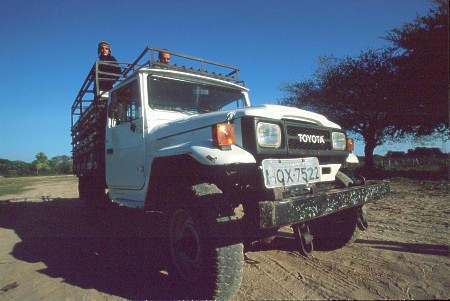
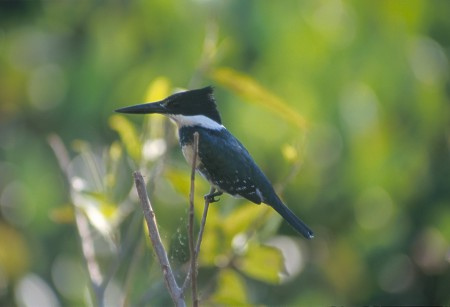
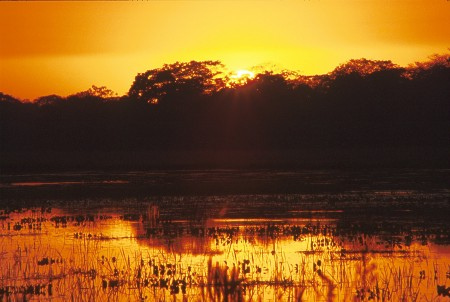


Banner image: Aerial view of the Igreja Matriz de Aquidauana (Andrew Mercer)
Other photos: Andrew Mercer
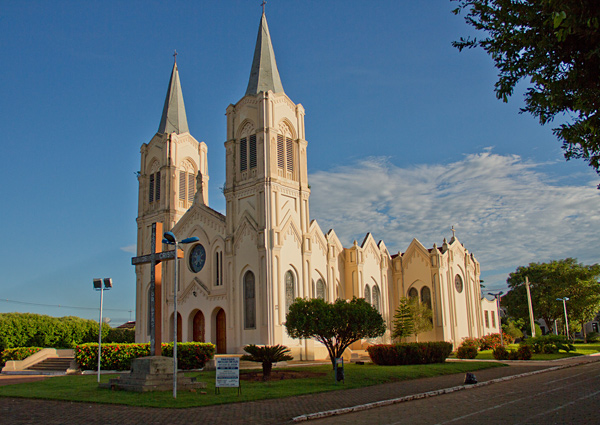
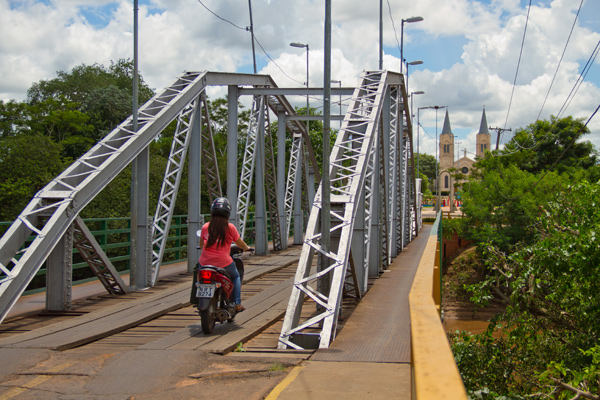

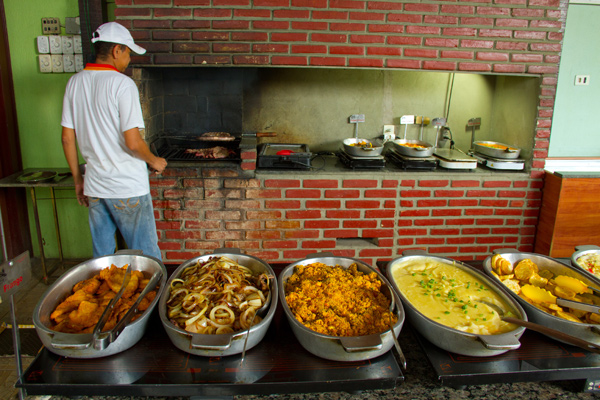
Pantanal Escapes